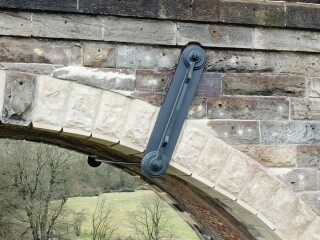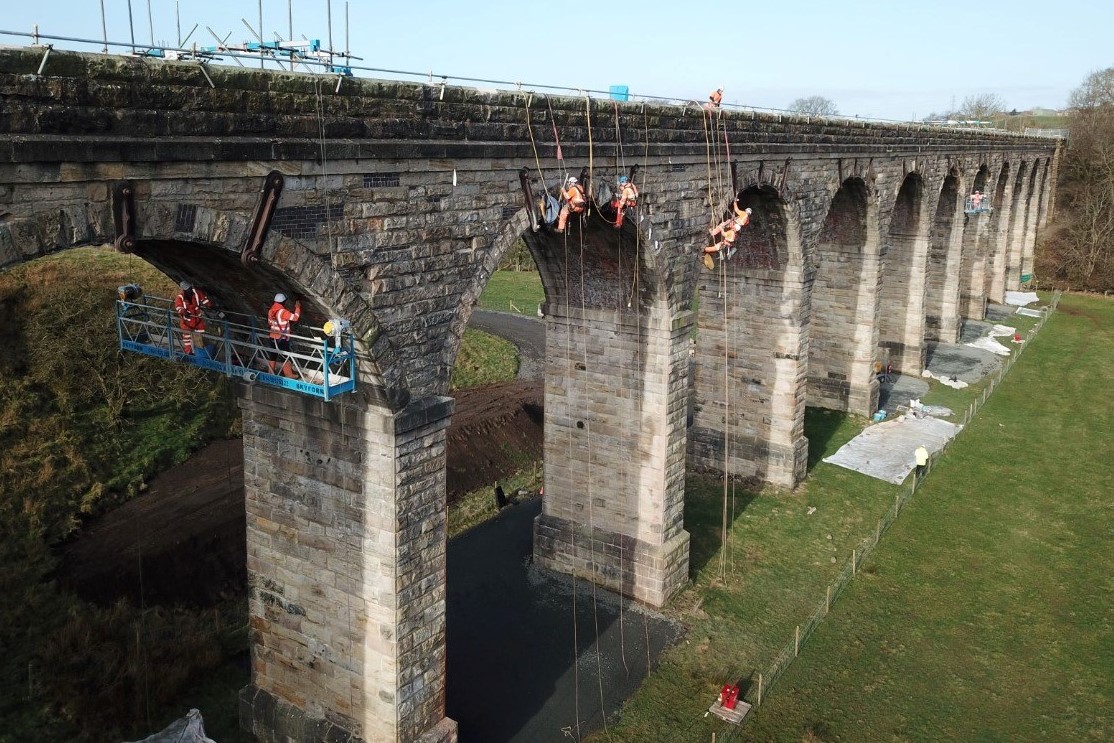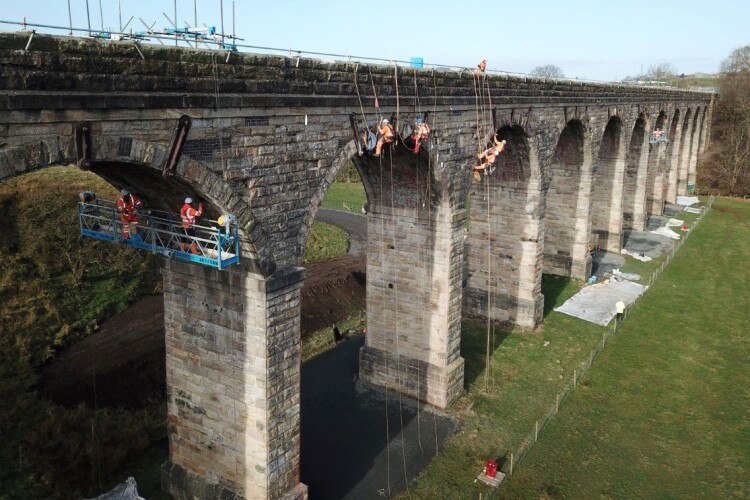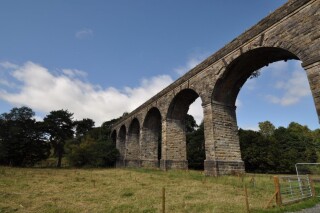Because the video under reveals, the 16-arch viaduct that straddles the River Avon on the West Lothian and Falkirk border has been returned to its former glory because of a £2m renovation programme funded by Historic Railways Property (HRE).
Work on the Westfield Viaduct included masonry repairs, waterproofing and the set up of 19 bat bricks, six bat tubes and two bat bins. It took 18 months to finish and will see the construction, constructed within the 1850s, stand for just a few generations extra.
HRE civil engineer Colin McNicol stated he was happy with how effectively the work had gone. “The viaduct had quite a few points that wanted consideration to make sure it remained protected and in good order and the work that has been accomplished makes any future plans to reopen the viaduct as an lively journey route for pedestrian, bike owner and different customers an actual risk,” he stated.
Westfield Viaduct is among the many 3,100 former railway buildings maintained by Nationwide Highways Historic Railways Property (HRE) on behalf of householders, the Division for Transport. Although Nationwide Highways has no remit for highways in Scotland – that could be a devolved authorities matter – it nonetheless takes care of railway viaducts there which might be not in use.
Westfield Viaduct was constructed between 1854 and 1855 as an extension of the Monkland Railway. This department line ran from Blackston Junction on the Slamannan Railway to Bathgate to fulfill the Wilstontown, Morningside and Coltness Railway earlier than turning west to ran to mines round Crofthead earlier than turning into a part of the North British Railway in 1865.
The construction has 12 giant arches of about 47ft span and two small ones at every finish. In complete it stretches for 660ft over land and water and stands 60ft from the highest of the arch to the riverbed.
Earlier than renovations might start two rounds of bat surveys had been carried out at completely different occasions of yr, together with a summer season re-entry survey to make sure bats had not returned to work areas for hibernation. Surveys included abseilers underneath the route of bat-licenced ecologists checking crevices within the masonry with endoscopes (an extended skinny tube with a digicam inside) for indicators of bat actions. Drones had been used for additional checks.
Any crevice that confirmed indicators of bat droppings or darkish stains on the stones, and crevices that had been too troublesome to survey correctly, had been fitted with excluders that permit bats to depart however not re-enter. All of the surveys had been accomplished underneath a NatureScot bat licence.
Momentary bat bins, tubes and bricks had been put in on areas of the construction the place work was not happening for bats to make use of safely in the course of the hibernation season. A number of bat bricks, bins and tubes had been then constructed into the viaduct as everlasting bat roosts.

Different work included intensive vegetation clearance and repairs to all 16 spans, together with north and south parapet repairs and waterproofing work. New forged iron pattress plates, manufactured to match the originals, have additionally been put in to switch broken parts and stone repairs had been color matched to the unique unweathered materials.
Nationwide Highways’ HRE group is often underneath hearth within the media for considerably cackhanded shortcuts in its Victorian bridge upkeep, merely filling in voids beneath arches with rubble and concrete, thus stopping any improvement of greenway routes alongside the disused railway alignments beneath the arches.
In June final yr, the previous chairman and chief govt of the Strategic Rail Authority, Richard Bowker, was so incensed by what had occurred to Nice Musgrave Bridge in Cumbria’s Eden Valley, he stated: “I’ve by no means been huge on ‘and now heads should roll’ however, on this event a minimum of, the CEO of Nationwide Highways should formally apologise in addition to scrap this coverage of unwarranted vandalism.”
Changing the pattress plates

Millar Callaghan Engineering Companies was awarded the contract to switch the broken and damaged pattress plates and tie rods that bind the construction collectively on the prime of the 16 arches.
An in depth survey ascertained detailed dimension and design of the prevailing metal forged iron plates to the brand new alternative plates would precisely match. The brand new plates and tie rods had been fabricated in Millar Callaghan’s Irvine workshop.
A spider crane was positioned on prime of the viaduct to help with the elimination of the previous, and set up of the brand new, pattress plates. Powered entry platforms had been used to entry each the skin face and the underside of the arch to take away and set up steelwork.
The previous cracked and broken plates eliminated had been eliminated with care and talent to make sure that they didn’t break aside throughout elimination. The brand new plates and tie rods had been then put in and torqued up into place. A contemporary coat of paint was utilized to clean up each the brand new and present steelwork.
Obtained a narrative? E-mail information@theconstructionindex.co.uk



